The Ultimate 2 Day Kyoto Itinerary (For 2022)
This article may contain affiliate links, meaning I may earn a small commission if you purchase through these links at no extra cost to you. Please refer to my Disclosure Policy for more information.
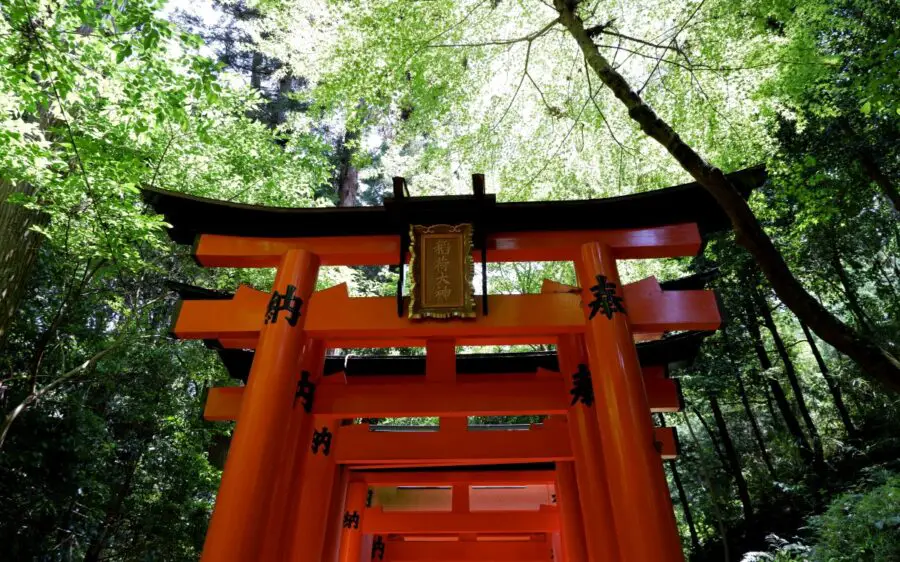
Kyoto. One of Japan’s ancient capitals, it is the quintessential Japanese city, with breathtaking shrines, mouth-watering food, charming neighborhoods, and lush bamboo forests. While you can easily spend days wandering around Kyoto’s numerous temples and gardens, it can also be perfectly experienced in just two days. So today, I have outlined the ultimate 2 day Kyoto itinerary!
While I have visited Kyoto on multiple occasions, two days is typically the amount of time I spend there per trip. And this is because exploring Kyoto in two jam-packed days is perfect, as you’re able to hit up all of Kyoto’s top sights without ever getting bored.
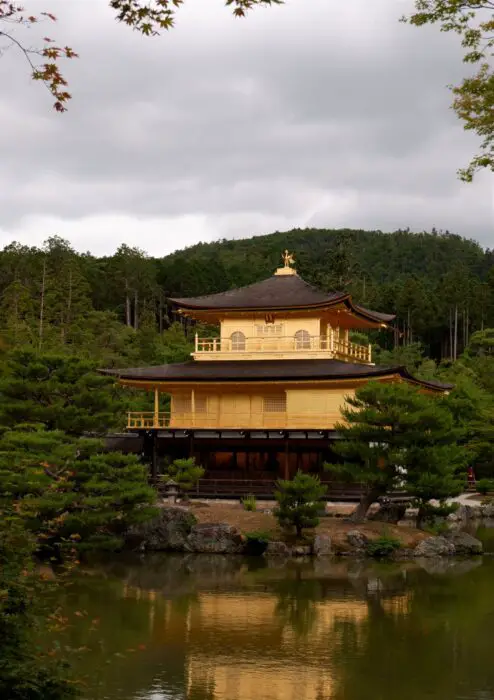
However, there is a lot to do in Kyoto. Like, a lot, a lot. So, before I get into the 2-day Kyoto itinerary, I’m first going to list all the amazing things to do in Kyoto (if you want to jump right into the Kyoto itinerary, you can skip this portion of the article. There’s also a summary itinerary below).
So, while this article outlines the perfect itinerary for 2 days in Kyoto, it can also be used as a 3-day Kyoto itinerary, or even for 4 days.
Well, without further ado, let’s begin!
Originally published on September 2, 2019.
Last updated on January 17, 2021.
2 Day Kyoto Itinerary Summary
| Day 1 | 8:00 am: Fushimi Inari Taisha 11:00 am: Nishiki Market 2:00 pm: Kiyomizu-Dera 4:00 pm: Gion District |
| Day 2 | 8:00 am: Arashiyama Bamboo Forest 10:00 am: Togetsukyo Bridge 10:30 am: Monkey Park Iwatayama 1:00 pm: Nishiki Market 3:00 pm: Nanzen-Ji Temple 4:30 pm: Philosopher’s Path |
The Best Things to Do in Kyoto
1) Fushimi Inari Shrine
An absolute must for your 2 day Kyoto itinerary (and your trip to Japan and Asia in general) is the Fushimi Inari shrine. Most known for its vivid red Torii gates, it is Kyoto’s top sight.
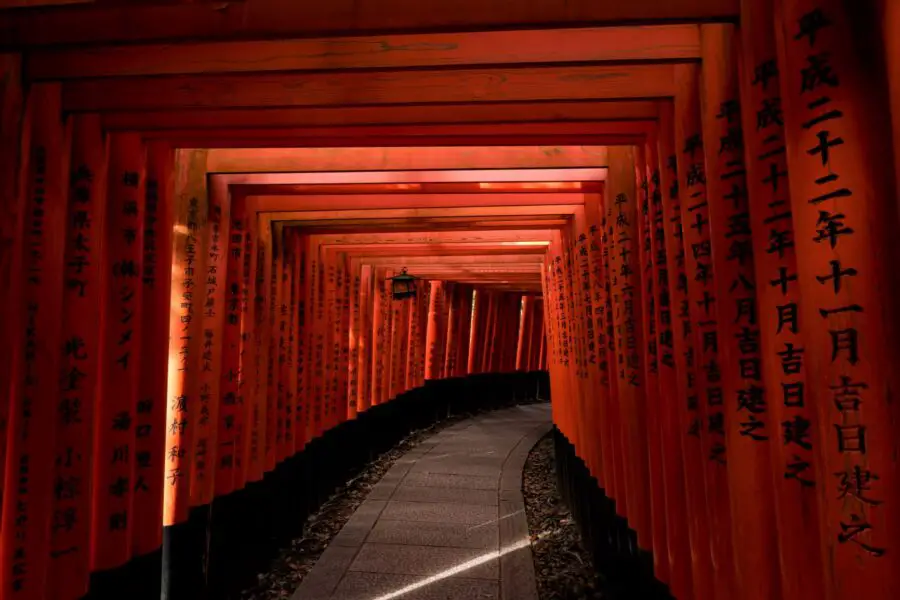
With delightful shrines, paths of red arches, charming hiking trails up Mt Inari, and a cool fox motif (noticeable through the numerous fox statues scattered around the shrine), there is so much to do at the Fushimi Inari Taisha. It offers a lot more than just an Instagram pic!
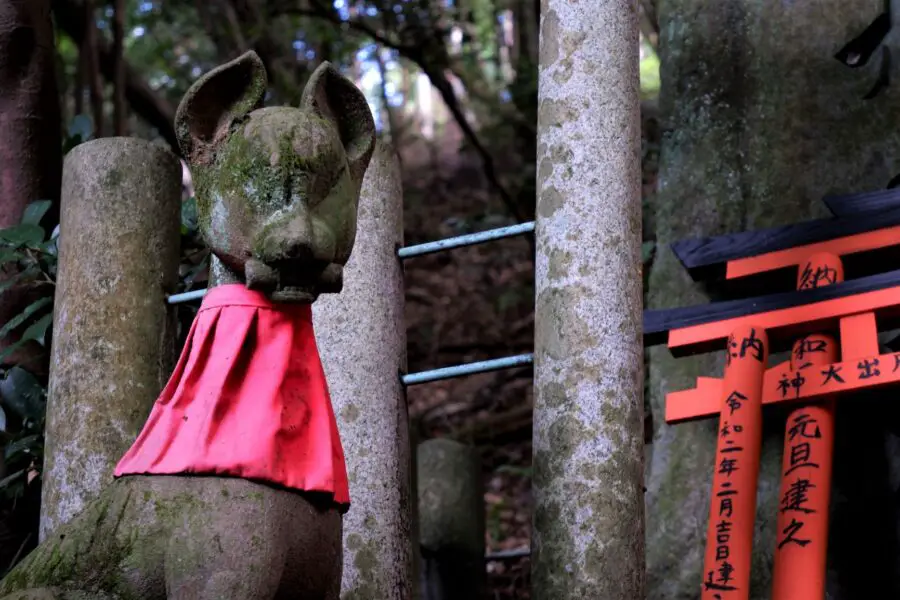
Nevertheless, a pro tip for taking pictures at Fushimi Inari’s red arches is to NOT take them right away. The crowds swarm for pictures at the beginning of the trail, but there are over 32,000 gates and sub-gates along Mount Inari, so they go on for quite a bit. So, if you walk a while, you can get some spaces all to yourself.
Furthermore, these Torii gates are the beginning of the incredible Fushimi Inari hike up Mount Inari, which (roundtrip) takes about 2-3 hours. It’s a pretty easy hike, so I definitely recommend doing it! But, if you don’t have the time or energy to complete the entire hike, there are spectacular views partway up the trail as well.
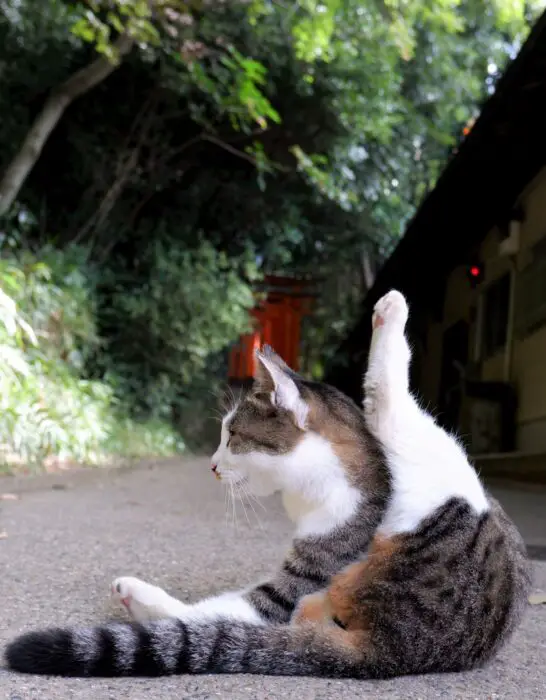
Overall, the Fushimi Inari Shrine is an incredible place to visit while you’re in Kyoto. Furthermore, with no Fushimi Inari entrance fee, it is the perfect stop for budget travelers and luxury travelers alike!
Address: 68 Fukakusa Yabunouchicho, Fushimi Ward, Kyoto, 612-0882, Japan
How to Get There: It’s about a 1-minute walk from Inari Station.
Cost: Free
Hours: Open 24/7
Website: http://inari.jp/en/
2) Gion District
Next, another Kyoto must is definitely the Gion district. Known as the best of the Kyoto geisha districts, it is a charming, traditional neighborhood filled with shops, restaurants, and ochaya (teahouses). It is also where you can see some geishas (known in Kyoto as geiko). However, remember to be respectful!
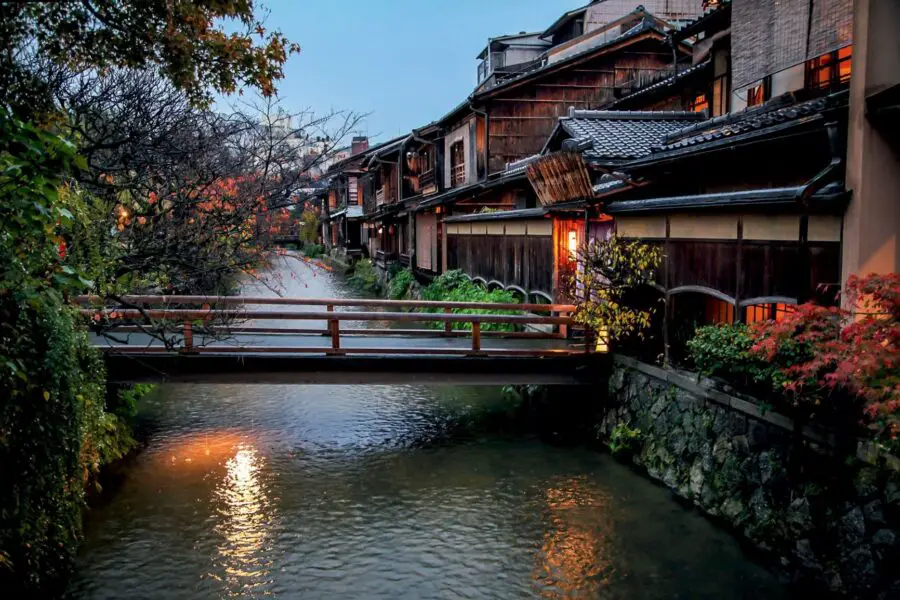
The Gion district is definitely one of the best Kyoto neighborhoods, filled with picturesque canals, enchanting streets, and historic Kyoto houses. I absolutely recommend exploring the Shirakawa Area (near the canal), and Hanami-koji street.
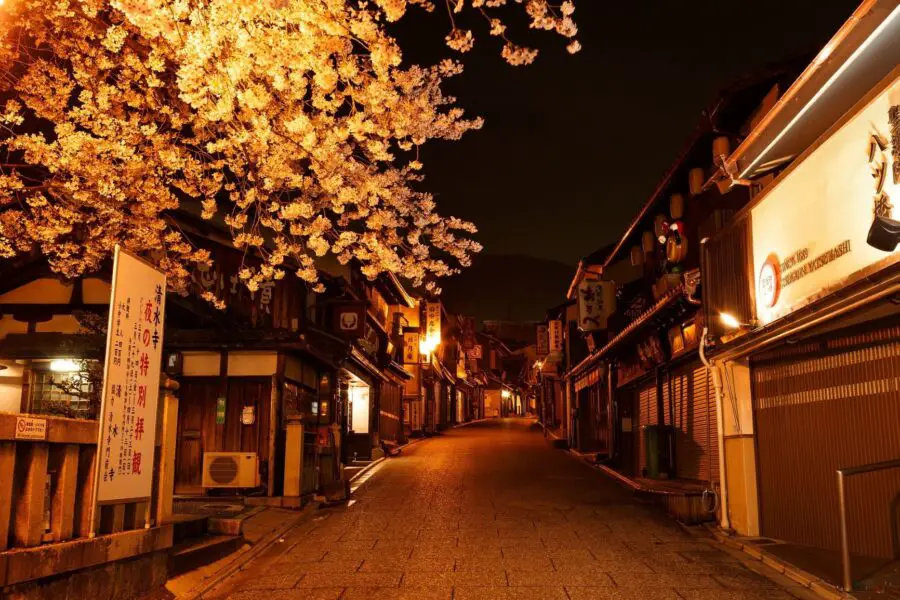
I additionally recommend visiting Gion at night. Not only is it stunning, but the Gion district is filled with incredible restaurants, so it is a great place to relax after a long day of sightseeing.
3) Kiyomizu-dera
Next, another great Kyoto sight is the Kiyomizu-dera temple, located partway up Mount Otowa. Known for its large wooden terrace, it provides breathtaking views of Kyoto.
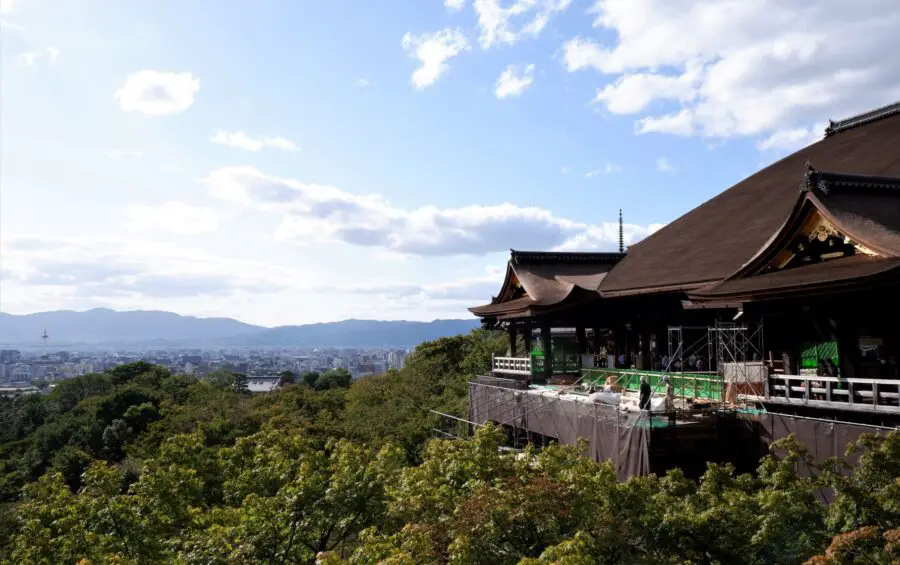
The Kiyomizu-dera temple is located in the heart of the Gion district, so it’s best to visit both at the same time. Furthermore, the Kiyomizu-dera temple is one of the best spots to admire Kyoto’s autumn leaves and cherry blossoms.
Nevertheless, there’s a ton of things to do at Kiyomizu-dera, regardless of the season. Founded in 778, this ancient temple is utterly enchanting. I recommend checking out the Jishu shrine, dedicated to the deity of love and matchmaking, and the Otowa Waterfall, located at the base of the main hall.
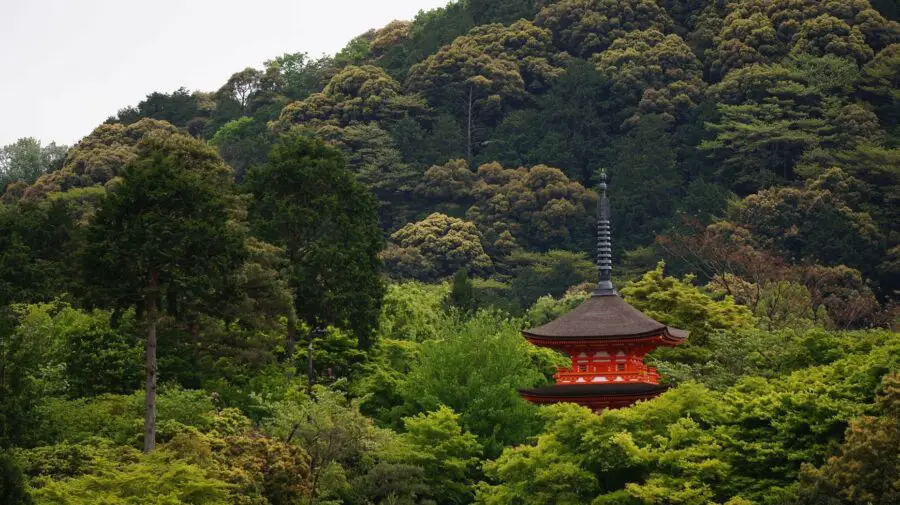
One of the most interesting things to do at Kiyomizu-dera is to drink from the Otowa Waterfall. The waterfall is divided into three separate streams, representing longevity, school success, and success in love and dating. You can reap these benefits by drinking from the streams using a cup attached to a long pole, but it is considered greedy to drink from all of them!
Address: 294 Kiyomizu, Higashiyama Ward, Kyoto, 605-0862
How to Get There: It’s about a 20-minute walk from Kiyomizu-Gojo Station.
Cost: 400 yen
Hours: 6 am to 6 pm (but it sometimes closes later, for certain night illumination events).
Website: https://www.kiyomizudera.or.jp/en/
4) Arashiyama Bamboo Groves
Another essential stop on your Kyoto itinerary (especially if you’re a budget traveler, since it’s free) are the Arashiyama bamboo groves.
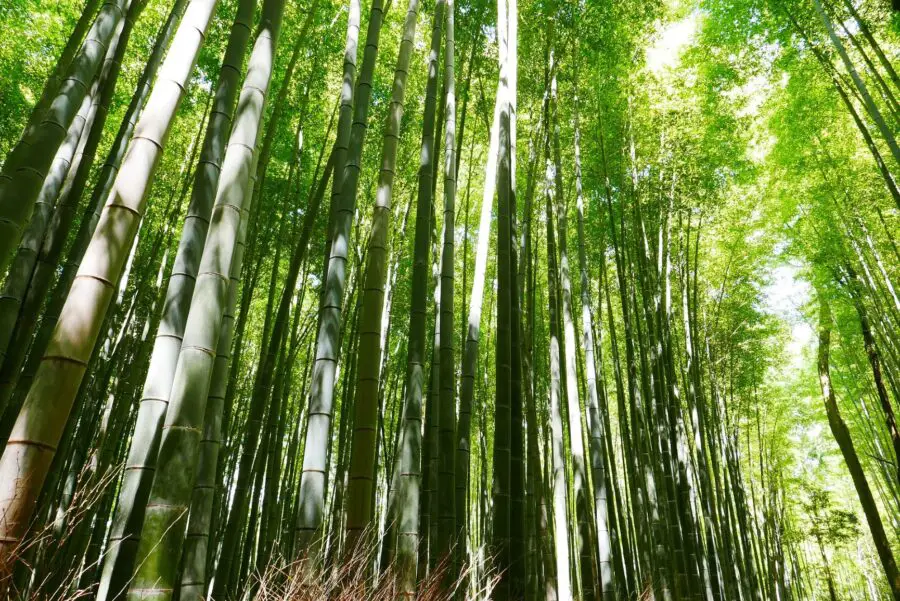
The Arashiyama bamboo forest is another one of the great Kyoto Instagram spots, filled with towering bamboo trees and quaint paths. While there are several things to do in Arashiyama, I truly believe the best thing to do is to simply stroll around the soaring bamboo trees, and admire the scenery.
While this can sometimes be difficult, with the hordes of tourists desperately trying to get their perfect shot, there are some remote areas in the Arashiyama forest, where you’re simply able to relax and breathe. But, to avoid the crowds, I also suggest leaving early.
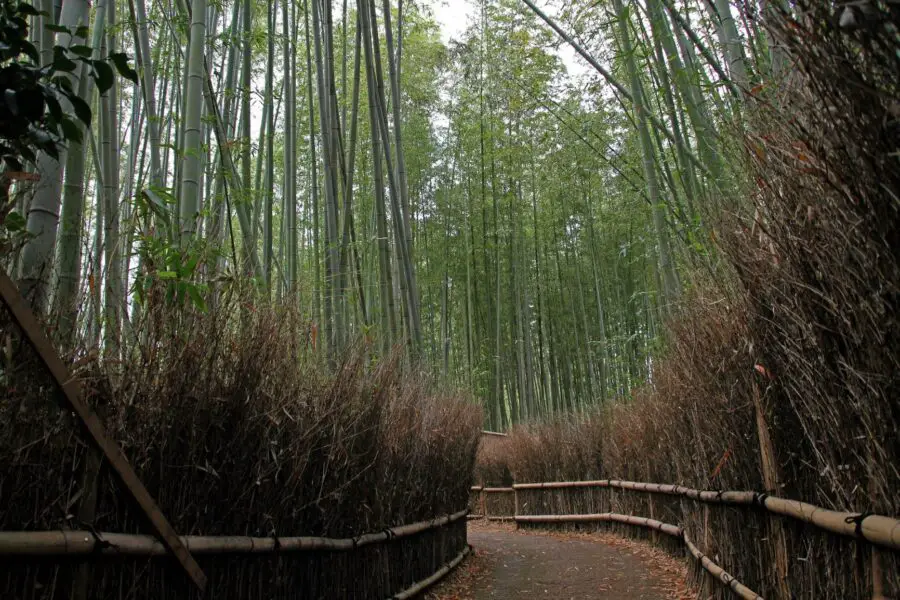
Address: Arashiyama Bamboo Forest, Ukyo Ward, Kyoto, 616-0000, Japan
How to Get There: It’s about a 12-minute walk from Saga-Arashiyama Station.
Cost: Free
Hours: Open 24/7
5) Monkey Park Iwatayama
A lesser known yet super awesome and exciting attraction is the Kyoto Monkey Park, i.e., Monkey Park Iwatayama.
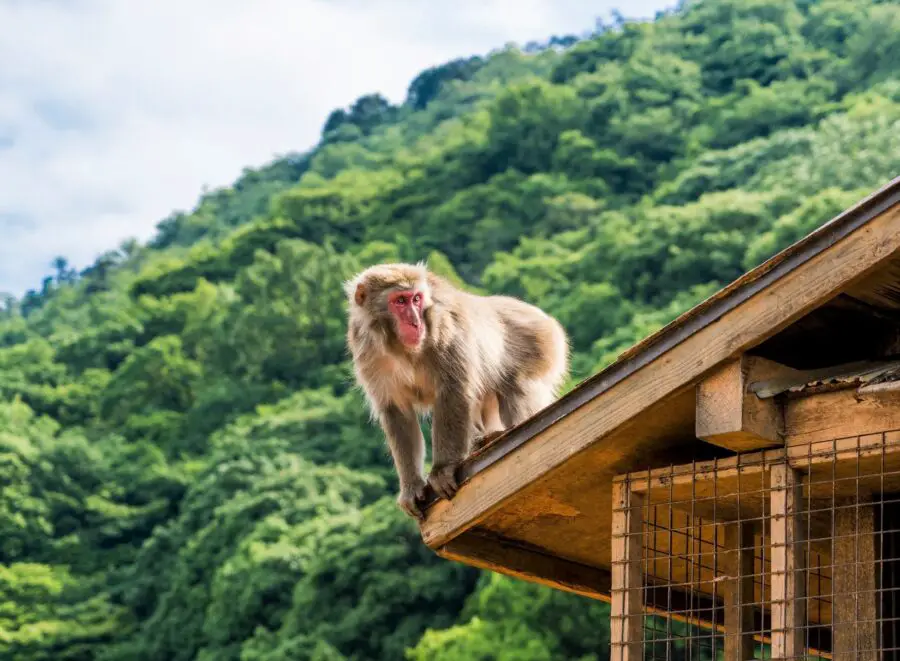
It is heaven for all the animal lovers out there (like me), as this monkey park in Kyoto gets visited by over 170 wild, Japanese macaque monkeys. It also provides some spectacular views, so everybody wins!
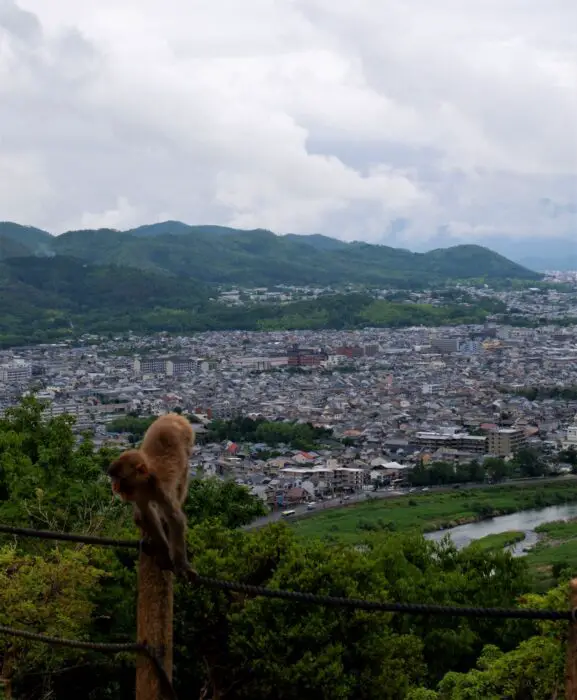
Located near the Arashiyama bamboo groves, the Iwatayama Monkey Park consists of a short, steep climb to the top of a mountain, during which you can spot a few monkeys scurrying around. Since they’re wild, you’re advised to avoid eye contact.
Once you reach the summit, however, you have the opportunity to be the one in a cage; there is a specified, enclosed area where you can buy food and feed the monkeys.
Altogether, the Monkey Park Arashiyama is an incredible experience. So, if you love animals, want to try something new, or wish to admire Kyoto from above, I definitely recommend checking out the Monkey Park Iwatayama!
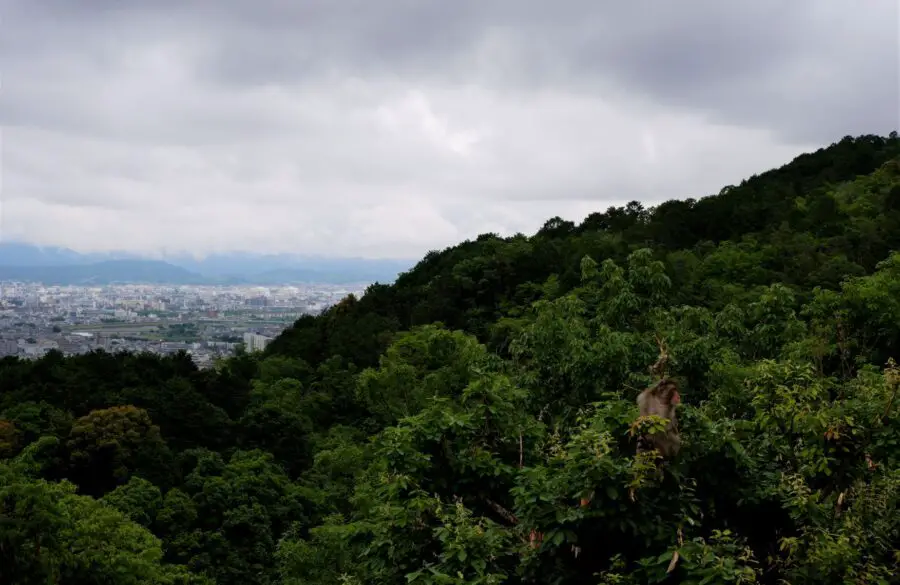
Address: 61 Arashiyama Nakaoshitacho, Nishikyo Ward, Kyoto, 616-0004, Japan
How to Get There: All options includes a bit of walking (unless you go by car). I recommend taking the JR San-In Line, and getting off at Saga-Arashiyama Station. Monkey Park Iwatayama is about a 25-minute walk from the station, but you’ll walk over the Togetsukyo Bridge on the way (which wouldn’t be worth visiting on its own).
Cost: 550 yen for adults, and 250 yen for children.
Hours: 9 am to 4 pm (with the top area closing at 4:30 pm).
Website: http://www.monkeypark.jp/
6) Togetsukyo Bridge
Like I said before, if you go to the Monkey Park Iwatayama (or the Arashiyama Bamboo Groves), I highly recommend walking on the Togetsukyo Bridge en route.
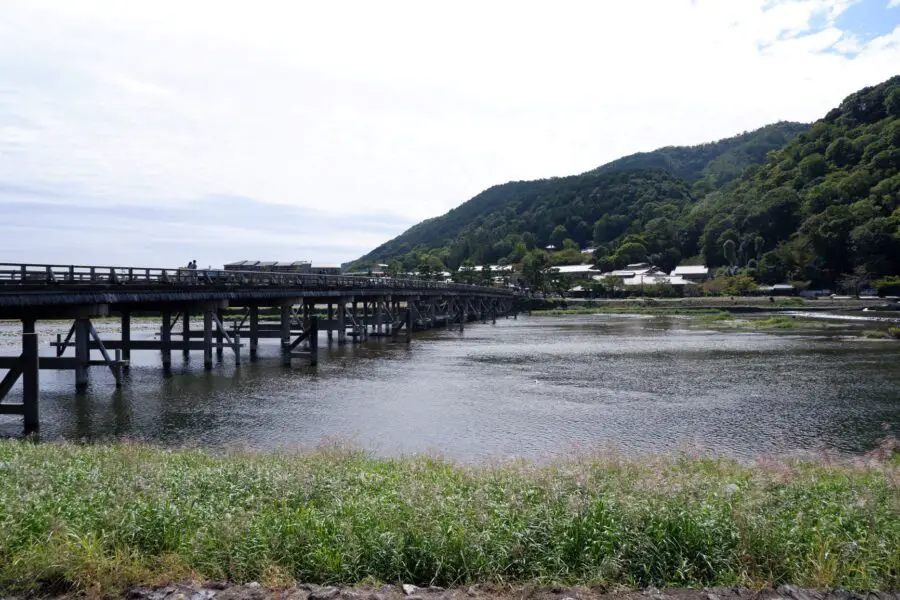
An ancient and picturesque bridge, there’s not much to it. However, it is quite relaxing to simply admire the birds, the fishermen, and the surrounding hills!
Address: Saganakanoshimacho, Ukyo Ward, Kyoto, 616-8383, Japan
How to Get There: It’s about a 10-minute walk from Saga-Arashiyama Station.
Cost: Free
Hours: Open 24/7
7) Nishiki Market
Next, the Nishiki Market is an unmissable stop on your itinerary for Kyoto, especially if you’re a foodie. A long, narrow street located in central Kyoto, the Nishiki Market shopping district is filled with a vibrant and busy atmosphere, and is boasting with everything food.
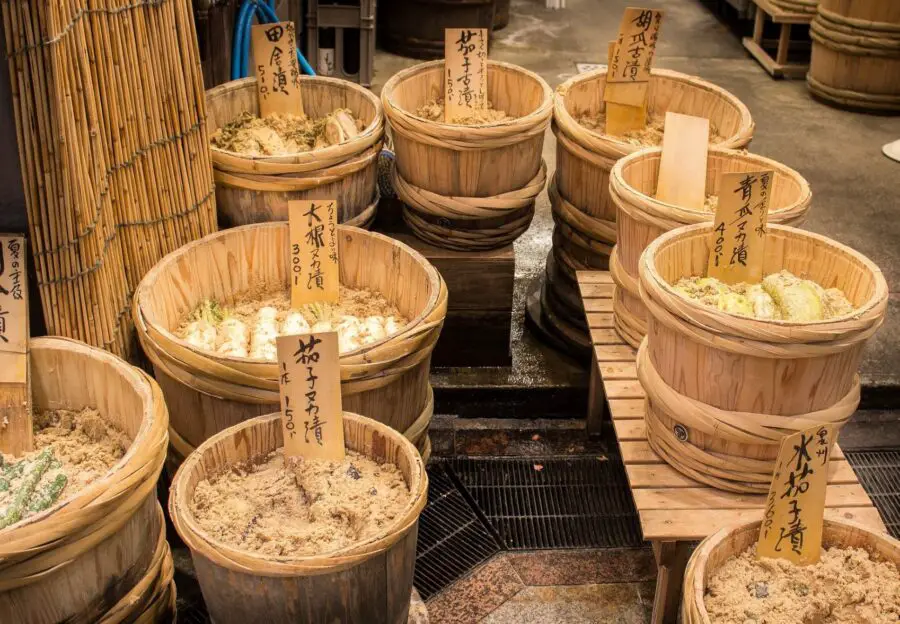
Fortunately, my hostel was 5 minutes away from the Kyoto Nishiki Market, and I advise everyone to find accommodation in this area. After a long day of exploring shrines and climbing through bamboo forests, it’s an absolute delight to head over to the Nishiki food market, and browse the numerous food options.
Additionally, there are several great shopping areas around Nishiki Market, so you can spend hours perusing the stores and buying souvenirs! Overall, the Nishiki Market is a great place to eat in Kyoto.
Address: 609番地 Nishidaimonjicho, Nakagyo Ward, Kyoto, 604-8054, Japan
How to Get There: It’s about a 10-minute walk from Shijo Station.
Cost: Free (excluding any purchases you make).
Hours: 9 am to 6 pm
8) Kinkaku-ji Temple (The Golden Pavilion)
I’m going to be frank with you, I’m not a huge fan of the Kinkaku-ji temple. In my opinion, it is waaaayy overhyped. However, it is also very popular and admired, so I’m including it in this list.
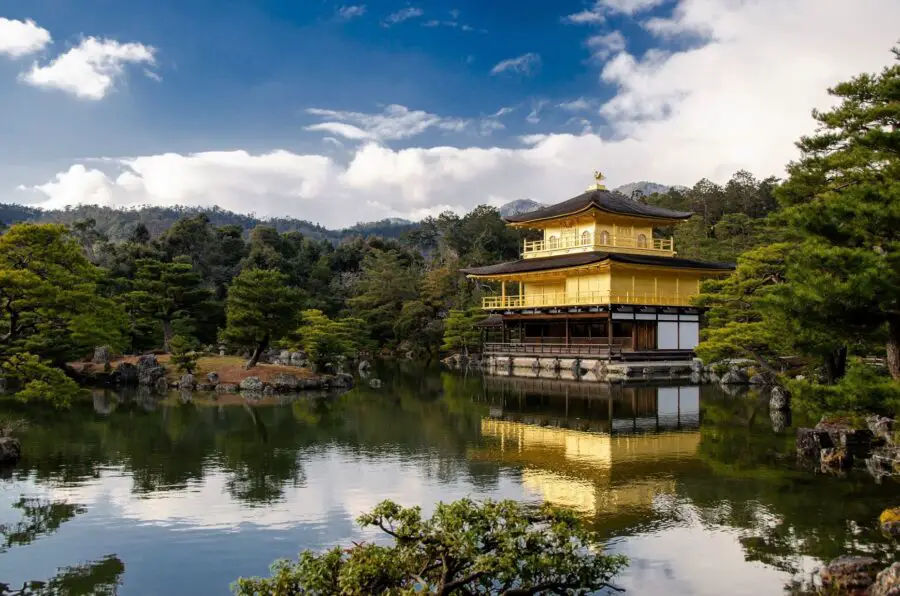
Kinkaku-ji, otherwise known as the Golden Pavilion, is the most prominent temple in Kyoto. Frequently used to represent Kyoto (with it being on countless postcards), it is undoubtedly beautiful.
However, the Kinkaku-ji temple is also a tourist trap. One visit was more than enough for me; you see the temple, with crowds of fellow tourists desperately trying to take the same picture, some of them shoving you out of the way of their shot. You walk for a few minutes through the park, admire the fish… and that’s it.
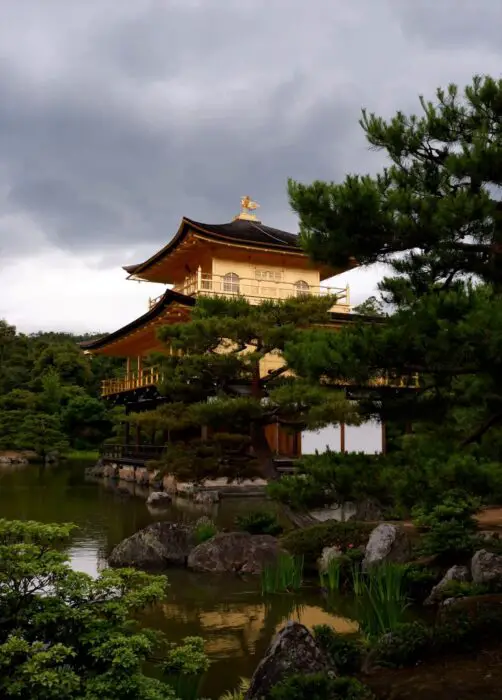
However, I understand its allure. It is an ancient and breathtaking temple, and one of Kyoto’s top attractions. So, I have included it on this list, and if you go, I hope you love it!
Address: Kyoto 603-8361, Japan
How to Get There: There are no train stations near Kinkaku-Ji, so if you don’t have a car or if you don’t want to spend a lot of money on a taxi, I recommend taking the bus. There are numerous possible buses that you can take, depending on your location. I recommend the Kyoto City Bus 205 (but not the rapid service), or the Kyoto City Bus 101.
Cost: 400 yen
Hours: 9 am to 5 pm
Website: https://www.shokoku-ji.jp/en/kinkakuji/
9) Ginkaku-ji Temple (The Silver Pavilion)
While many Kyoto visitors know and visit the Golden Pavilion (Kinkaku-ji), fewer know of the Silver Pavilion (Ginkaku-ji). A Zen temple, it was actually inspired and modeled after the Golden Pavilion.
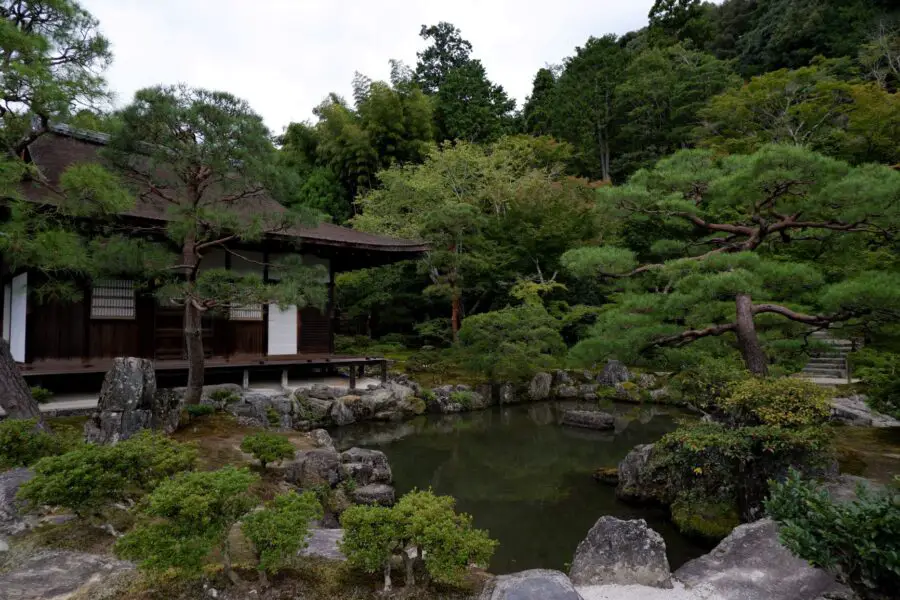
However, I personally prefer the Silver Pavilion. Surrounded by a peaceful garden, the Ginkaku-ji temple holds its own charm, with its moss garden, “Sea of Silver Sand”, and aerial views of Kyoto. Situated at the base of Kyoto’s eastern mountains, the Ginkaku ji temple is a charming place to visit!
Address: 2 Ginkakujicho, Sakyo Ward, Kyoto, 606-8402
How to Get There: While there are no train stations near Ginkaku-ji, it is accessible through the Kyoto city bus 5, 17, and 100. Additionally, you can walk on the Philosopher’s Path to Ginkaku-ji!
Cost: 500 yen
Hours: March to November: 8:30 am to 5 pm
December to February: 9 am to 4:30 pm
Website: https://www.shokoku-ji.jp/en/ginkakuji/
10) Tetsugaku No Michi (The Philosopher’s Path)
While you may not have the time to walk the Philosopher’s Path on your 2 day Kyoto itinerary, I wholly recommend checking it out if you’re staying longer (or if you’re visiting Kyoto during cherry blossom season)!
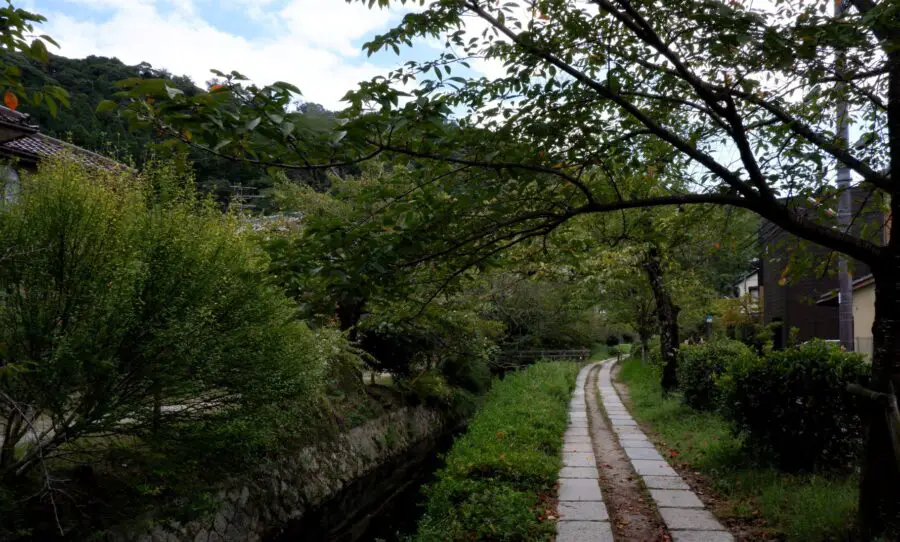
The Tetsugaku No Michi Kyoto, otherwise known as the Philosopher’s Path, is a stone path lined with cherry blossom trees, connecting the Ginkaku-ji temple (the Silver Pavilion) and the Nanzen-ji Temple. It was named after Nishida Kitaro, a highly-respected Japanese philosopher who used to walk along this path.
Set in a more residential area, the Tetsugaku No Michi lives up to its name, with a quiet and peaceful ambience perfect for meditation!
11) Nanzen-ji Temple
Finally, the last attraction on this list is the stunning Nanzen-ji temple. Situated at the foot of the Higashiyama mountains, it is one of the most important Japanese Zen temples.
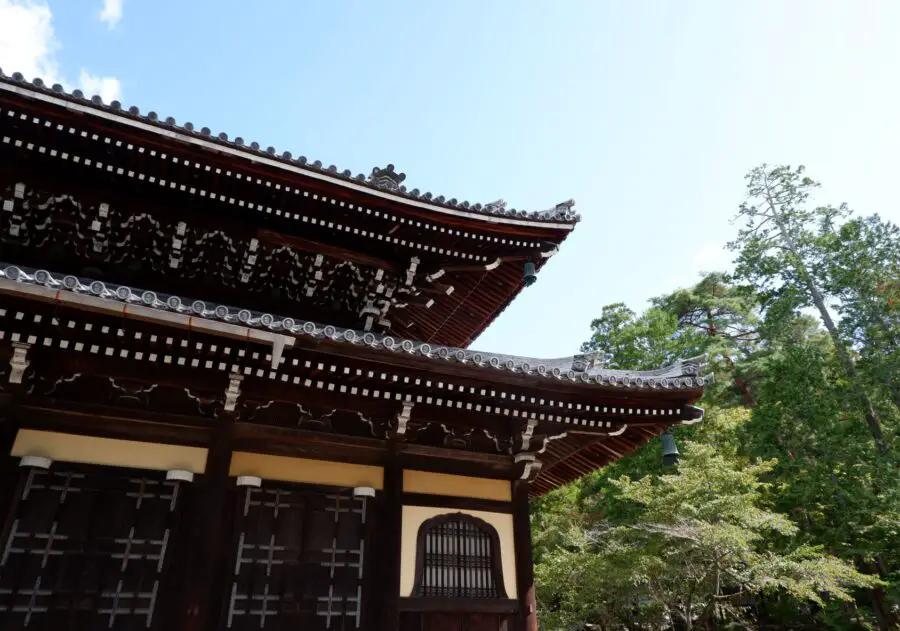
Originally built in the mid-13th century, the temple today boasts with both old and new architectural accomplishments. While the original temples were destroyed in throughout the 14th to 16th centuries, the Nanzen-ji temple has slowly been reconstructed thereafter.
With its impressive main entrance (called Sanmon), Roman-style aqueducts, and numerous sub-temples, you can easily spend hours wandering around each and every sight. However, while the main temple grounds are free, there are separate charges for the various sub-temples. So, if you’re on a budget, choose them wisely!
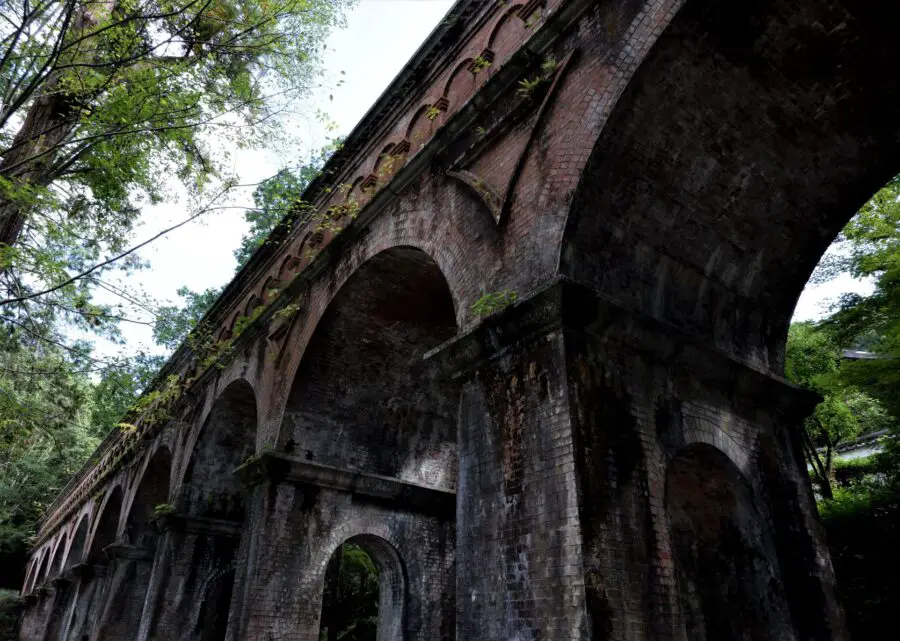
Address: 〒606-8435 Kyoto, Sakyo Ward, Nanzenji Fukuchicho, 86
How to Get There: It’s about an 11-minute walk from Keage Station.
Cost: 600 yen
Hours: 8:40 am to 5 pm
Website: http://www.nanzen.net/english/
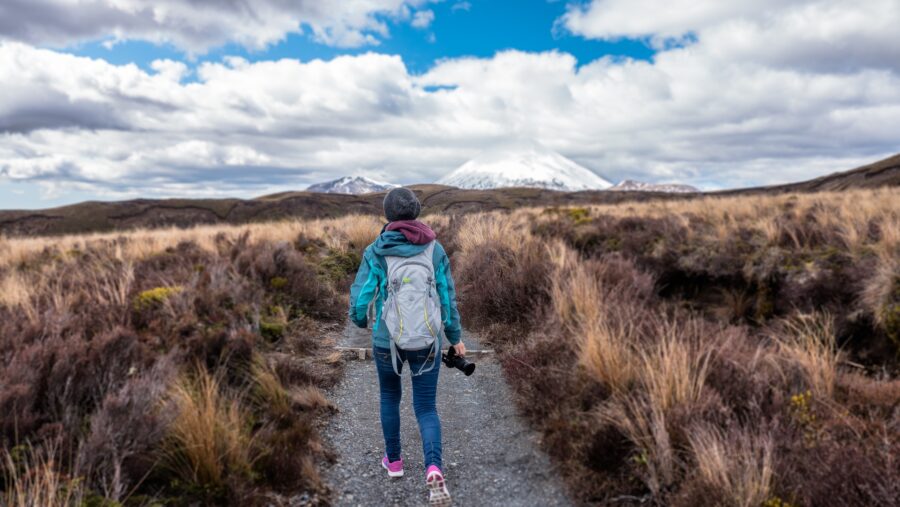
Are you desperately wishing to visit Kyoto, but wondering if you can since you’re still in school? Check out my article on how to travel as a student!
The Ultimate 2 Day Kyoto Itinerary
Now we get to the crux of the article! Obviously, I won’t be including all the things listed above into my 2 day Kyoto itinerary, as it is simply not feasible. But, this is everything I think is worth doing, perfectly compiled into two days in Kyoto!
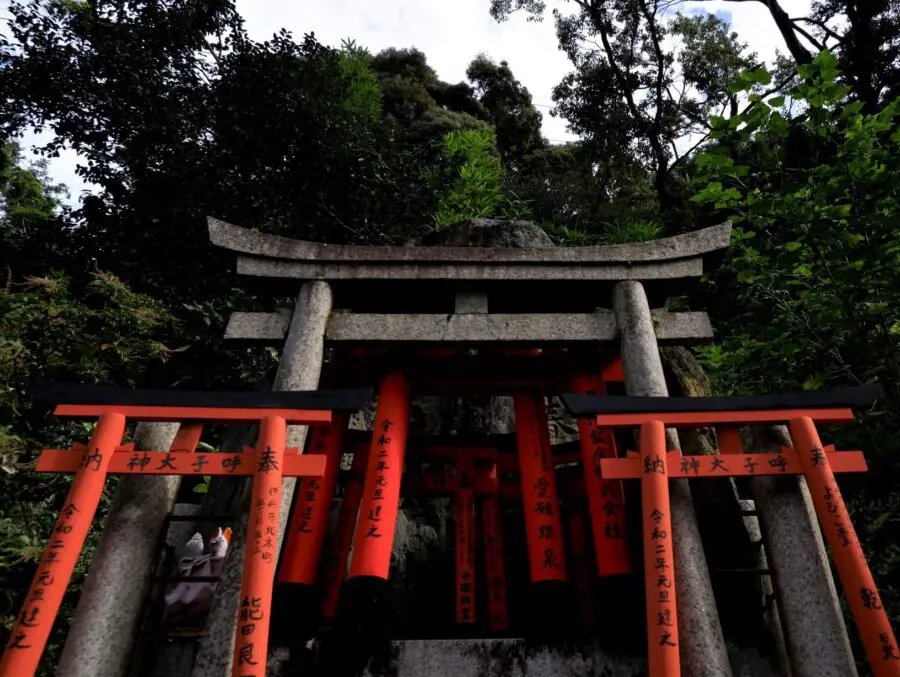
Day One
8:00 am = After arriving in Kyoto and dropping off your luggage, head to a Japanese convenience store for breakfast (they’re surprising stocked with some good food). Then, head over to the Fushimi Inari Taisha (hopefully beating some of the bigger crowds). Spend a few hours perusing the shrines, before embarking on the Fushimi Inari hike up Mount Inari, taking some great pics en route!
11:00 am = After spending a few hours at the Fushimi Inari shrine, head over to the Nishiki Market for a well-deserved lunch. Spend some time wandering down its narrow street, while trying out some of Japan’s street food (but note that it is considered rude in Japan to eat while walking). And, at the same time, go window shopping for some souvenirs!
2:00 pm = Now, head over to the Kiyomizu-dera. Admire the aerial views of Kyoto on its large, wooden terrace, head over to the Jishu Shrine, and drink from the Otowa Waterfall!
4:00 pm = Finally, it’s time to explore Kyoto’s Gion district. Visit an ochaya for a relaxing tea-break, before walking around Gion’s ancient streets, admiring its historic merchant houses, and taking some lovely pictures of the canal in the Shirakawa Area. Peruse its stores for souvenirs, keep a look out for geikos (but treat them respectfully), and find a delicious restaurant to eat in! You can easily spend hours in the Gion district, so explore as much as you want, before returning to your accommodations for the night.
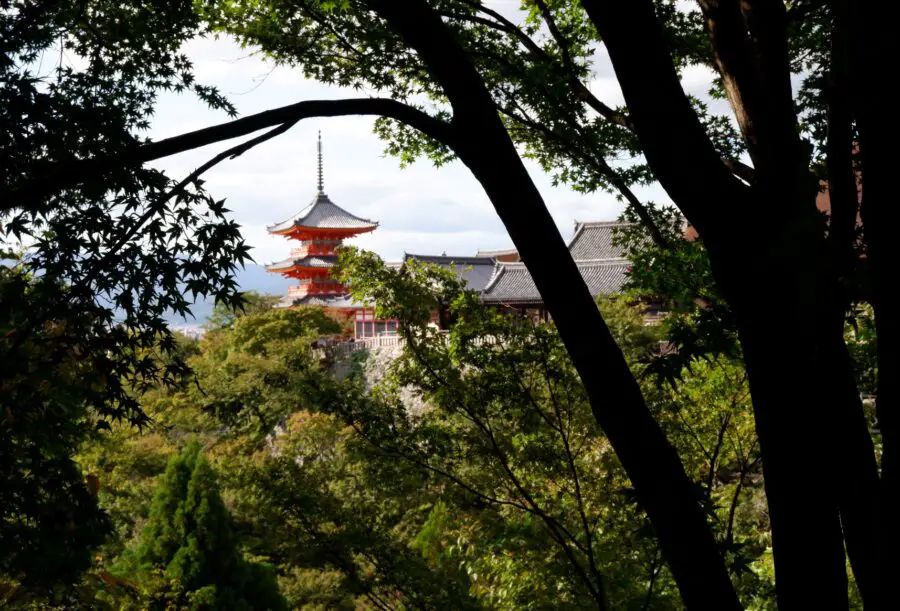
Day Two
8:00 am = Enjoy breakfast at a local café before heading out to one of Kyoto’s biggest attractions: the Arashiyama bamboo forest. Take some pictures, spend some time walking through the towering groves, and enjoy the enchanting ambience!
10:00 am = Cross the Togetsukyo bridge en route to the Monkey Park Iwatayama. But don’t forget to admire the birds, the boats, and the surrounding mountains!
10:30 am = Climb to the summit of the Monkey Park Arashiyama. Feed some monkeys, before heading out of the cage and gazing at the panoramic views of Kyoto. Spend some time watching the monkeys interact (and taking some adorable photos of them), before heading back down.

1:00 pm = Once again, head over to the Nishiki Market shopping district for lunch.
3:00 pm = After lunch, explore the numerous temples at the Nanzen-ji temple. Admire its massive entrance, wander around its Roman-inspired aqueducts, and visit some of its sub-temples!
4:30 pm = Time permitting, walk a portion of the Philosopher’s Path. Stroll alongside the canal and underneath the cherry blossom trees, meditating on your time spent in Kyoto.
6:00 pm = Enjoy a tasty and delicious meal for dinner, before either heading back to your hotel, or onwards to your next destination!
Overall,
I hope this 2 day Kyoto itinerary and list of things to do in Kyoto has inspired you as you brainstorm your travel plans! You’re obviously welcome to make any and all changes you want, so your time in Kyoto can be as enjoyable and amazing as possible.
Thanks for reading the article! If you have any questions, feel free to comment down below, and if you want to see more travel and hike-related content, make sure to check out my other articles.
Cheers,

Photos by the author and Pixabay.

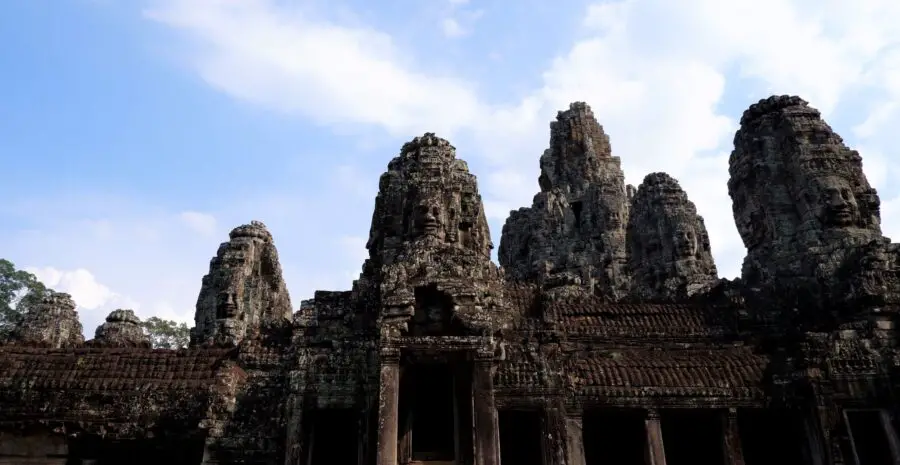
Planning a backpacking trip around Southeast Asia, and wondering where to go? Check out this 5-week Southeast Asia travel itinerary!
And while you’re at it, why not check out my ultimate female Southeast Asia packing list!
About to embark on a trip? Here are some helpful articles to make your trip as awesome and stress-free as possible:
And here are some additional helpful links:
- Click here for my walking guides
- Click here for my hiking guides
- Click here for more posts on Asia
- Click here for more resources
Like this post? Share it!

I would love to go to Kyoto! Thanks for all the information. I’m saving this for later use!
You’re welcome! I hope you get to visit Kyoto someday soon!